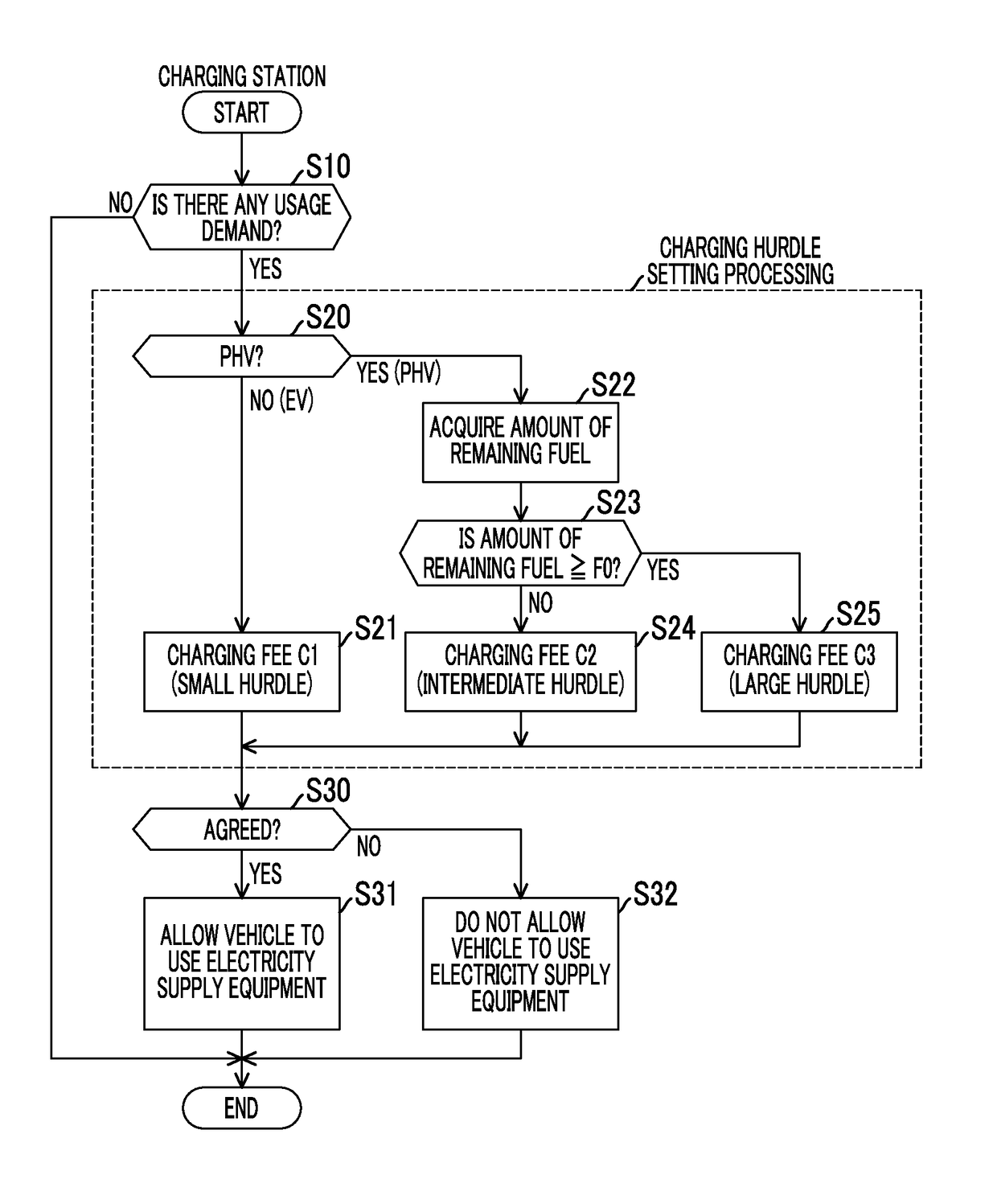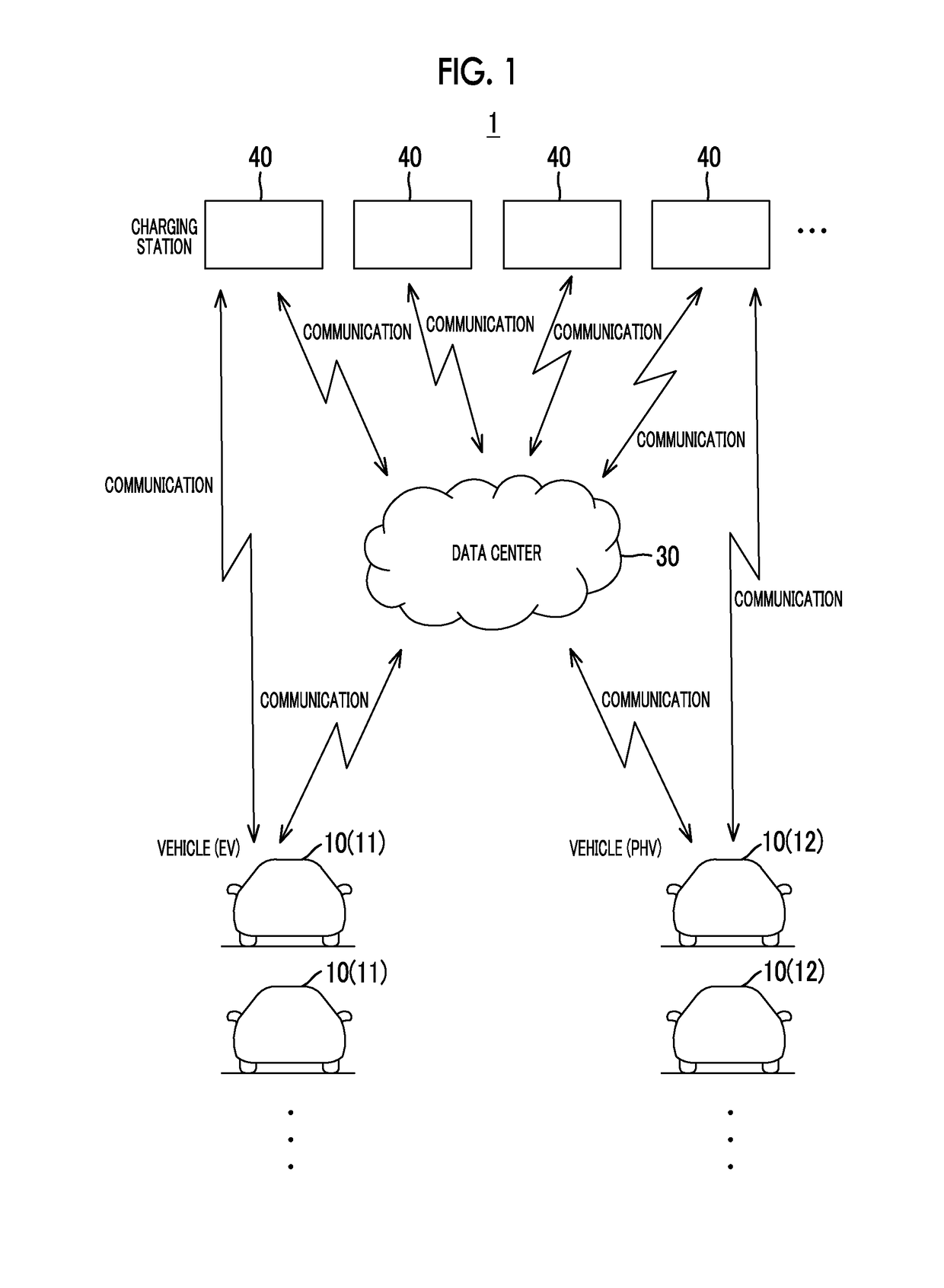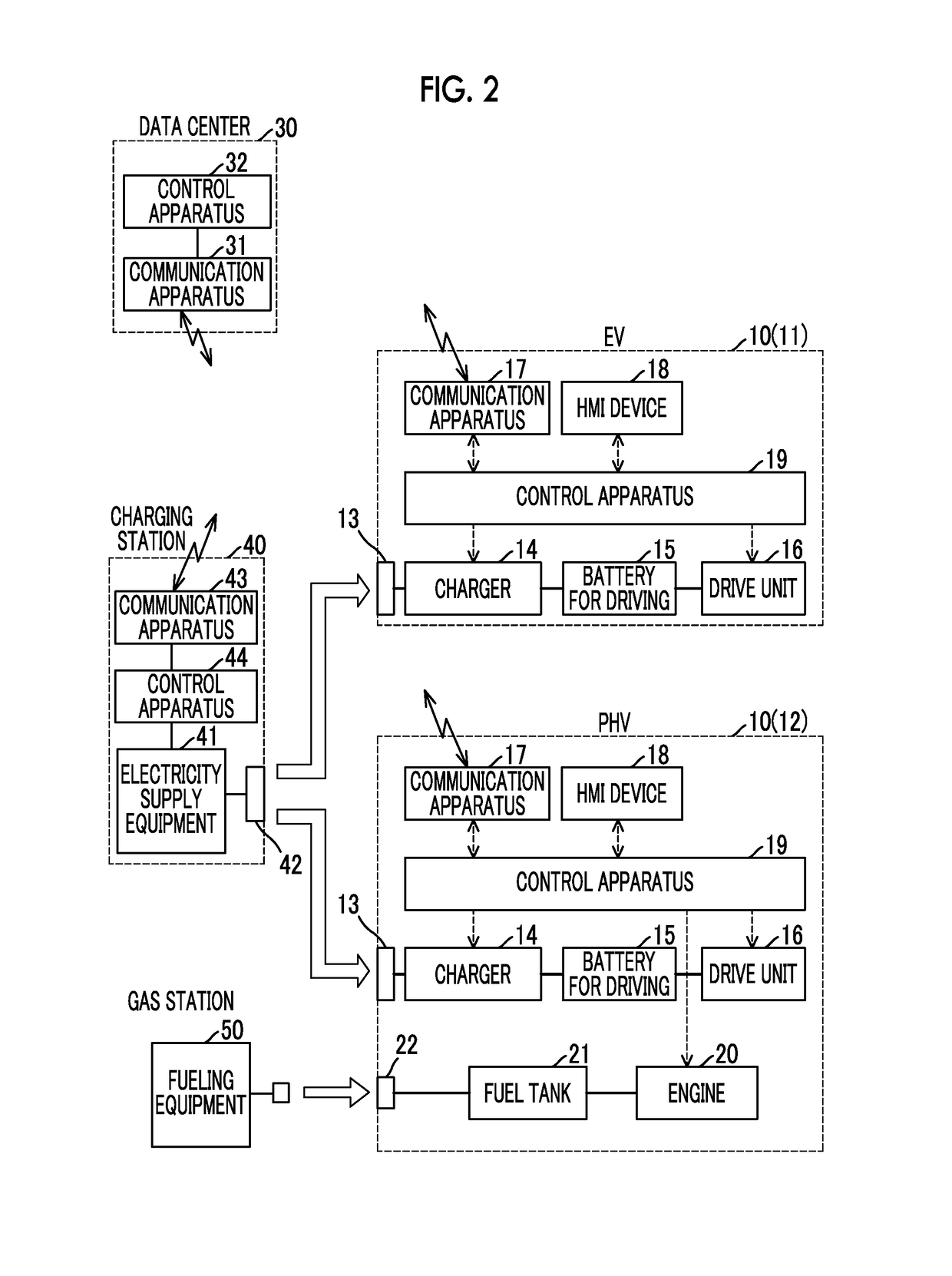Charging system for electrically driven vehicles
- Summary
- Abstract
- Description
- Claims
- Application Information
AI Technical Summary
Benefits of technology
Problems solved by technology
Method used
Image
Examples
embodiment 1
[0033]FIG. 1 is a view schematically illustrating an example of an overall configuration of a charging system 1 according to an embodiment. The charging system 1 includes a plurality of vehicles 10, a data center 30, and a plurality of charging stations 40.
[0034]Each of the vehicles 10 is an electrically driven vehicle configured to be able to perform external charging. The vehicles 10 include an electric vehicle (hereinafter, will be also referred to as “EV”) 11 and a plug-in hybrid vehicle (hereinafter, will be also referred to as “PHV”) 12. The electric vehicle 11 is provided with a motor generator and provided with no engine. The plug-in hybrid vehicle 12 is provided with a motor generator and an engine.
[0035]Each of the charging stations 40 is a public facility that is provided with at least one set of electricity supply equipment for performing external charging for the vehicle 10 and can be used by an unspecified large number of users. Each of the charging stations 40 is conf...
modification example 1
[0075]In the charging hurdle setting processing according to Embodiment 1, the usage condition (charging fee) is set based on parameters such as the type of the usage demand vehicle (whether the vehicle is the PHV 12 or the EV 11) and the amount of remaining fuel of the PHV 12.
[0076]However, the parameter used in setting the usage condition is not limited to the above-described parameters. For example, the usage condition may be set based on parameters such as the type of the usage demand vehicle, a SOC indicating the state of charge of the battery 15 for driving, and the type of the electricity supply equipment 41 (whether the electricity supply equipment is the DC electricity supply equipment or the AC electricity supply equipment).
[0077]FIG. 5 is a view illustrating a different example of the charging fee set through the charging hurdle setting processing according to Modification Example 1. In FIG. 5, the horizontal axis indicates the SOC of the battery 15 for driving, and the v...
modification example 2
[0082]In Embodiment 1, descriptions are given regarding an example in which the control apparatus 44 of the charging station 40 executes the entire processing illustrated in the flowchart in FIG. 3. However, all or a part of the processing illustrated in the flowchart in FIG. 3 may be executed by the control apparatus 32 of the data center 30 while the control apparatus 32 of the data center 30 communicates with the charging station 40 and the vehicle 10.
PUM
 Login to View More
Login to View More Abstract
Description
Claims
Application Information
 Login to View More
Login to View More - R&D
- Intellectual Property
- Life Sciences
- Materials
- Tech Scout
- Unparalleled Data Quality
- Higher Quality Content
- 60% Fewer Hallucinations
Browse by: Latest US Patents, China's latest patents, Technical Efficacy Thesaurus, Application Domain, Technology Topic, Popular Technical Reports.
© 2025 PatSnap. All rights reserved.Legal|Privacy policy|Modern Slavery Act Transparency Statement|Sitemap|About US| Contact US: help@patsnap.com



